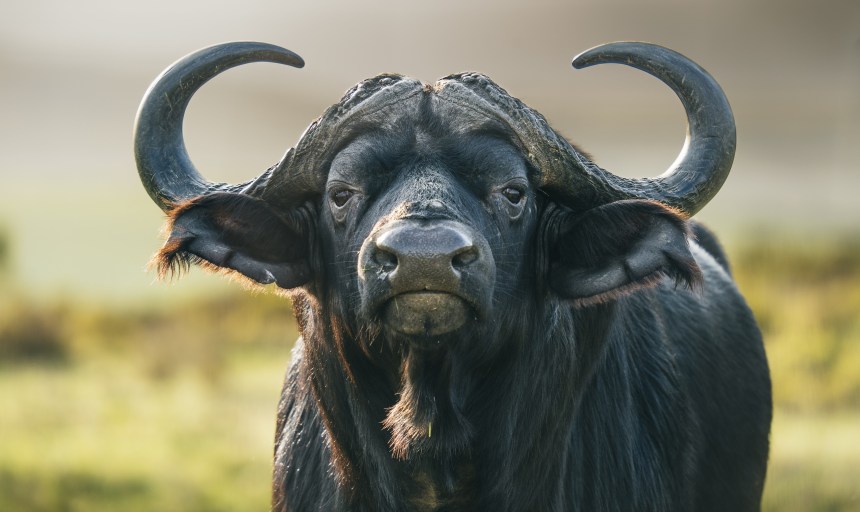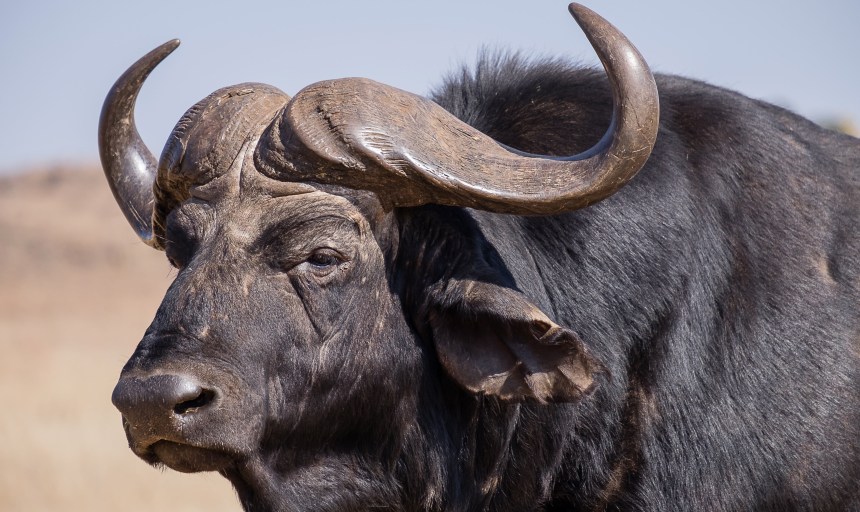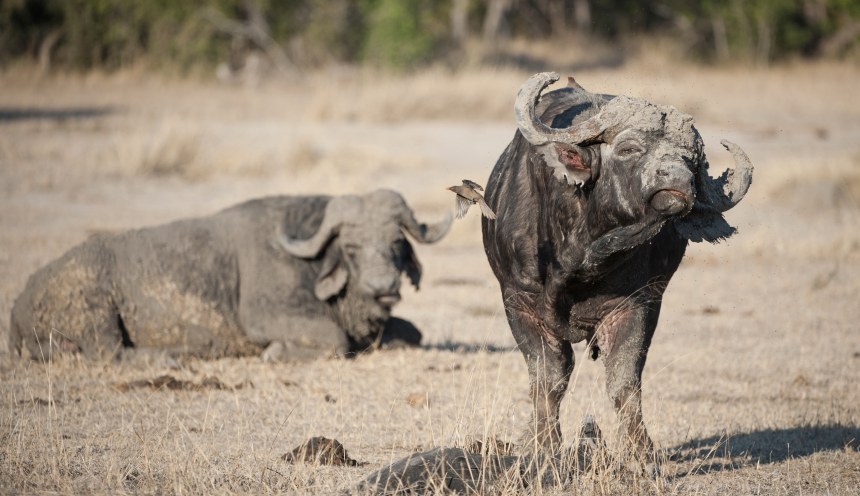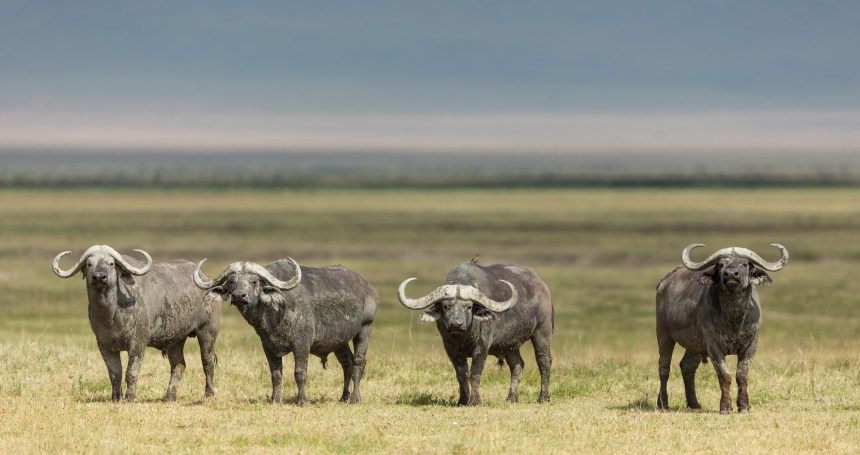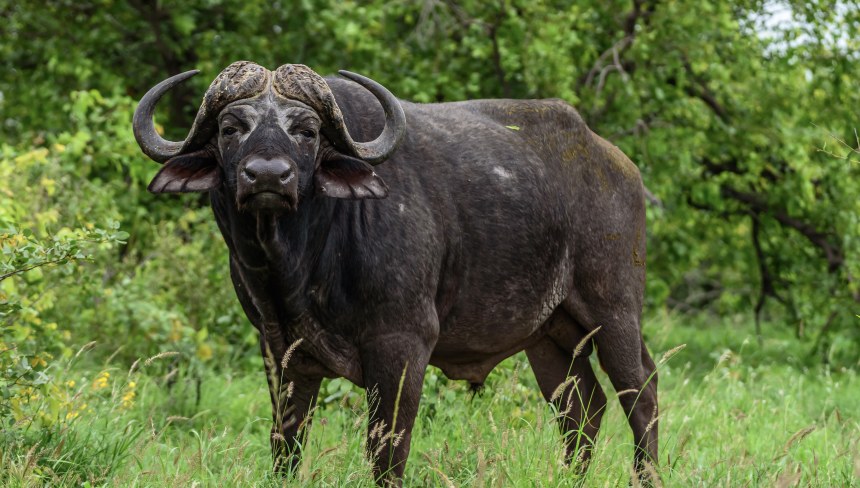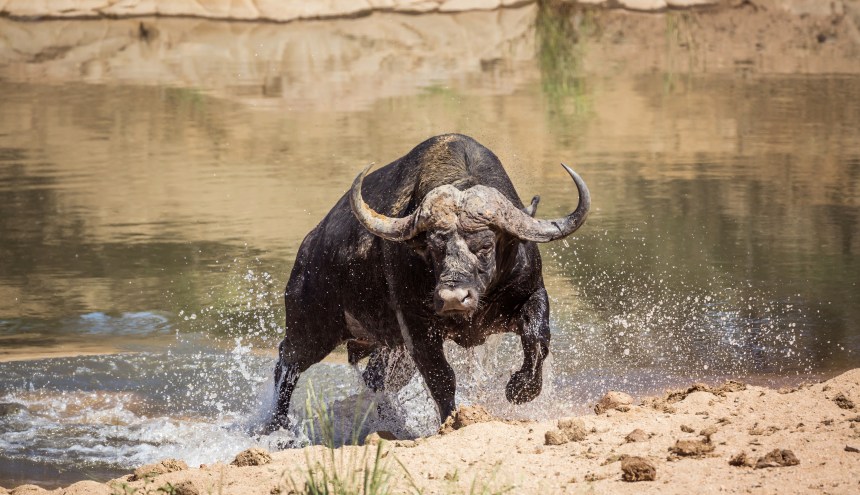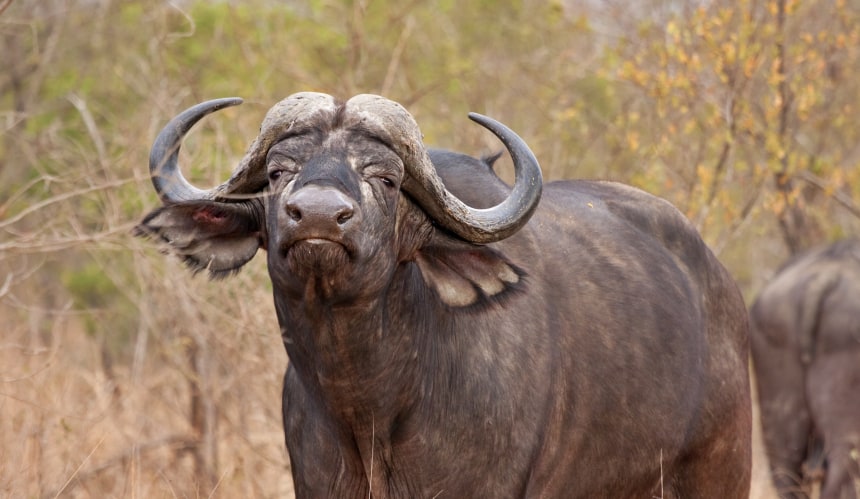| 5 mins read
The Cape Buffalo (Syncerus caffer), also known as the African Buffalo, is one of Africa’s most powerful and respected animals. As a member of the Big Five, it is a must-see for safari enthusiasts. With its massive curved horns, unpredictable nature, and reputation as the “Black Death,” the Cape Buffalo is both feared and admired.
This guide explores everything you need to know about Cape Buffalo — from fascinating facts and behavior to the best safari parks in 2025-2026, where you can see them up close.
What is a Cape Buffalo?
Scientific Name: Syncerus caffer
Weight: 500–900 kg (1,100–2,000 lbs)
Height: Up to 1.7 m (5.6 ft) at the shoulder
Speed: Up to 57 km/h (35 mph)
Lifespan: 18–20 years
Unlike the Asian Water Buffalo, Cape Buffalo have never been domesticated. Their strength, aggression, and protective herd behavior make them among the most dangerous animals in Africa.
Why is the Cape Buffalo Called the “Black Death”?
The nickname “Black Death” comes from their reputation for being unpredictable and aggressive when threatened. They are responsible for more human deaths in Africa than lions.
When charging, they can reach speeds of up to 57 km/h. Their massive horns, called a “boss,” are used to defend against lions and other predators. For this reason, hunters once considered the Cape Buffalo one of the toughest animals to track — earning their place in the Big Five.
Where Do Cape Buffalo Live?
Cape Buffalo are found throughout sub-Saharan Africa.
Habitats: Grasslands, floodplains, and open woodlands
Water Dependence: They must drink daily, so they are often found near rivers and swamps
Range: South Africa, Kenya, Tanzania, Botswana, Zimbabwe, Uganda, Zambia, and
Mozambique
Travel Tip: Always keep your camera ready on safari drives near rivers — that is where herds often gather to drink.
Behavior and Herd Life
Cape Buffalo are highly social animals.
Herds can number from 50 to over 1,000 individuals.
Female-led groups move with calves, while older males often form bachelor herds.
They have a symbiotic relationship with oxpeckers, birds that eat ticks and parasites off their skin.
Their main predator is the lion, but even lions risk serious injury when attacking buffalo.
Safari Insight: Some of the most thrilling safari moments involve buffalo versus lion standoffs, where the herd rallies together to defend a calf.
Best Safari Destinations to See Cape Buffalo in 2025
Cape Buffalo are one of the most reliable Big Five sightings — you are almost guaranteed to see them.
Top safari parks include:
Kruger National Park, South Africa – Huge herds roam the park, and encounters are common on guided drives.
Serengeti National Park, Tanzania – Famous for massive herds grazing on endless plains.
Ngorongoro Crater, Tanzania – A natural “zoo” where buffalo are seen year-round in large numbers.
Masai Mara, Kenya – Known for dramatic predator-prey encounters involving buffalo.
Okavango Delta, Botswana – Seasonal floods attract buffalo herds in spectacular numbers.
Conservation and Threats
IUCN Status: Least Concern (but declining in some regions).
Threats include:
Habitat loss due to farming and development
Diseases transmitted from domestic cattle
Poaching and illegal hunting
Conservation Efforts: Many populations are protected in national parks and private reserves. Eco-tourism safaris play a vital role in funding their protection.
Fun Facts About the Cape Buffalo
Cape Buffalo are often called “nature’s bodyguards,” but their behavior and biology reveal even more fascinating traits. Here are ten of the best:
There are five subspecies, including Cape, Dwarf, Forest (Congo), Sudan, Nile, and Virunga buffalo.
A large bull can weigh as much as a compact car.
Herds are often led by an experienced female.
Males develop a rock-hard shield at the base of their horns, known as a “boss.”
When threatened, buffalo form a protective circle around calves or weaker members.
They are known as the “Black Death” and the “Mafia of the Bush” for their aggressive nature.
Oxpecker birds remove parasites and also alert buffalo to danger.
They are primarily grazers, feeding on grass but also consuming leaves and bark in the dry season.
Mud wallowing helps them cool down and repel insects.
Despite their size, they are excellent swimmers.
FAQs About Cape Buffalo
Why is the Cape Buffalo dangerous?
Because of their unpredictable nature and powerful horns, they are considered one of Africa’s most dangerous animals.Is the Cape Buffalo part of the Big Five?
Yes — along with the lion, leopard, elephant, and rhinoceros.What predators hunt Cape Buffalo?
Primarily lions, although crocodiles may prey on calves.Where is the best safari to see Cape Buffalo in 2025-2026?
Kruger (South Africa) and Serengeti (Tanzania) and Ngorongoro (also Tanzania) are the top choices.Cape Buffalo vs. Water Buffalo – what is the difference?
Cape Buffalo are wild African animals with massive horns, while Water Buffalo are domesticated animals found in Asia.
Plan Your Safari Adventure
The Cape Buffalo is more than just a safari sighting — it is a symbol of the raw power of the African wilderness. Whether you want to see a massive herd moving across the savanna or witness the drama of buffalo versus lion encounters, a safari offers unforgettable moments.
Ready to see Cape Buffalo in 2025? Explore Big Five safaris and wildlife tours with trusted local guides on tourHQ.


